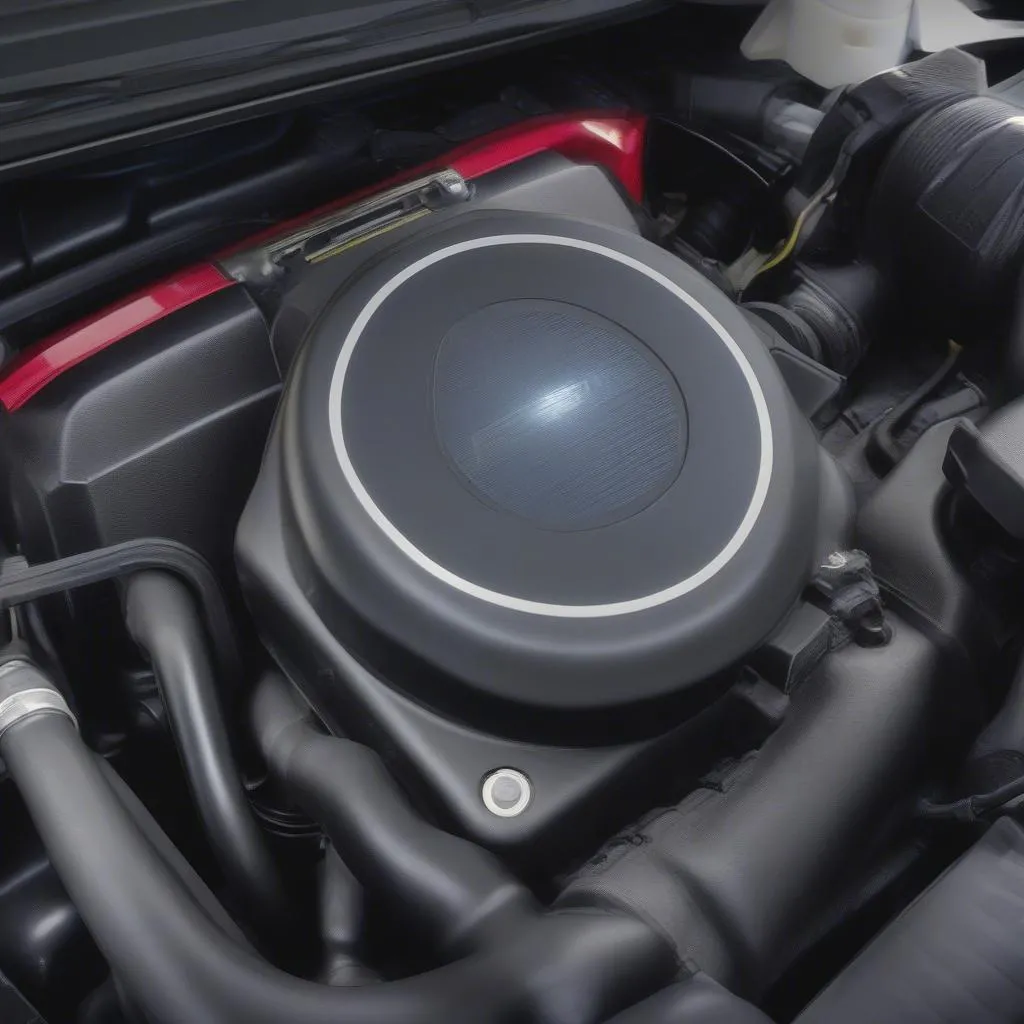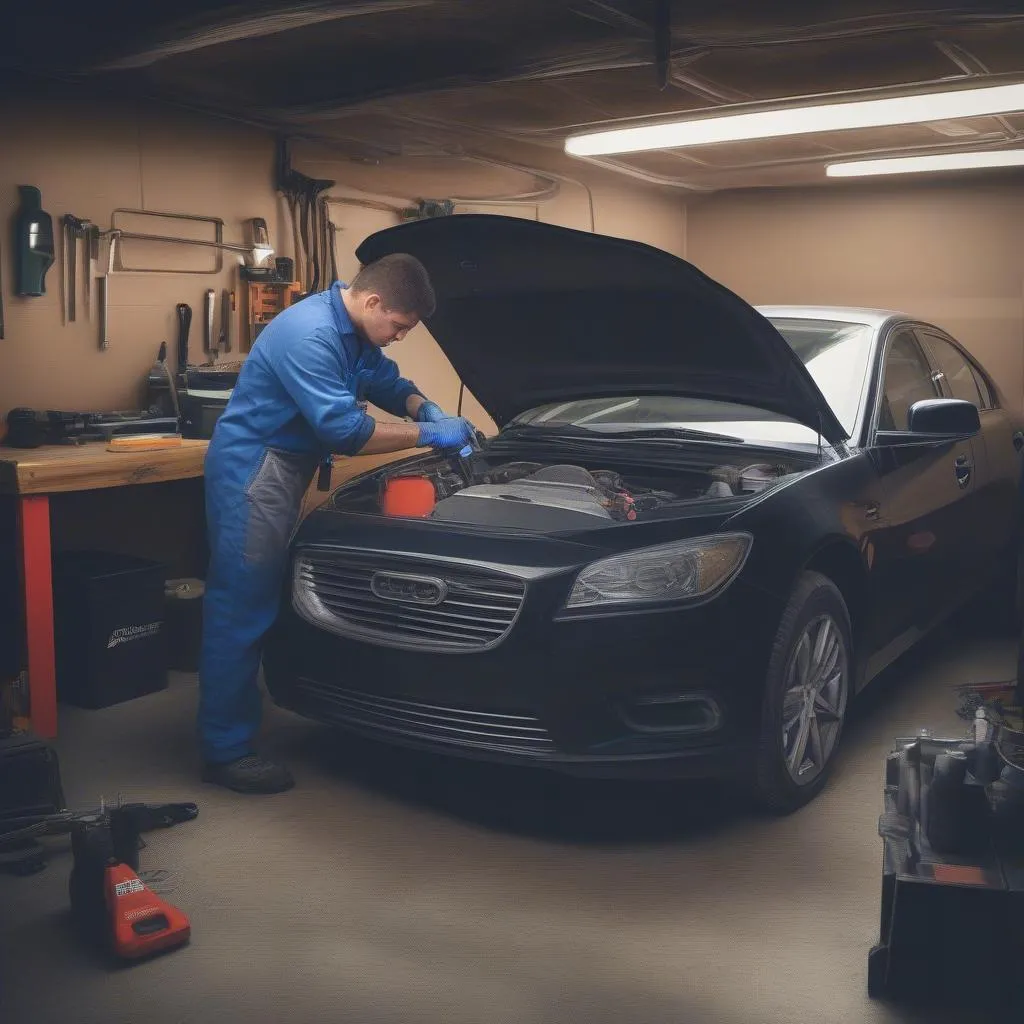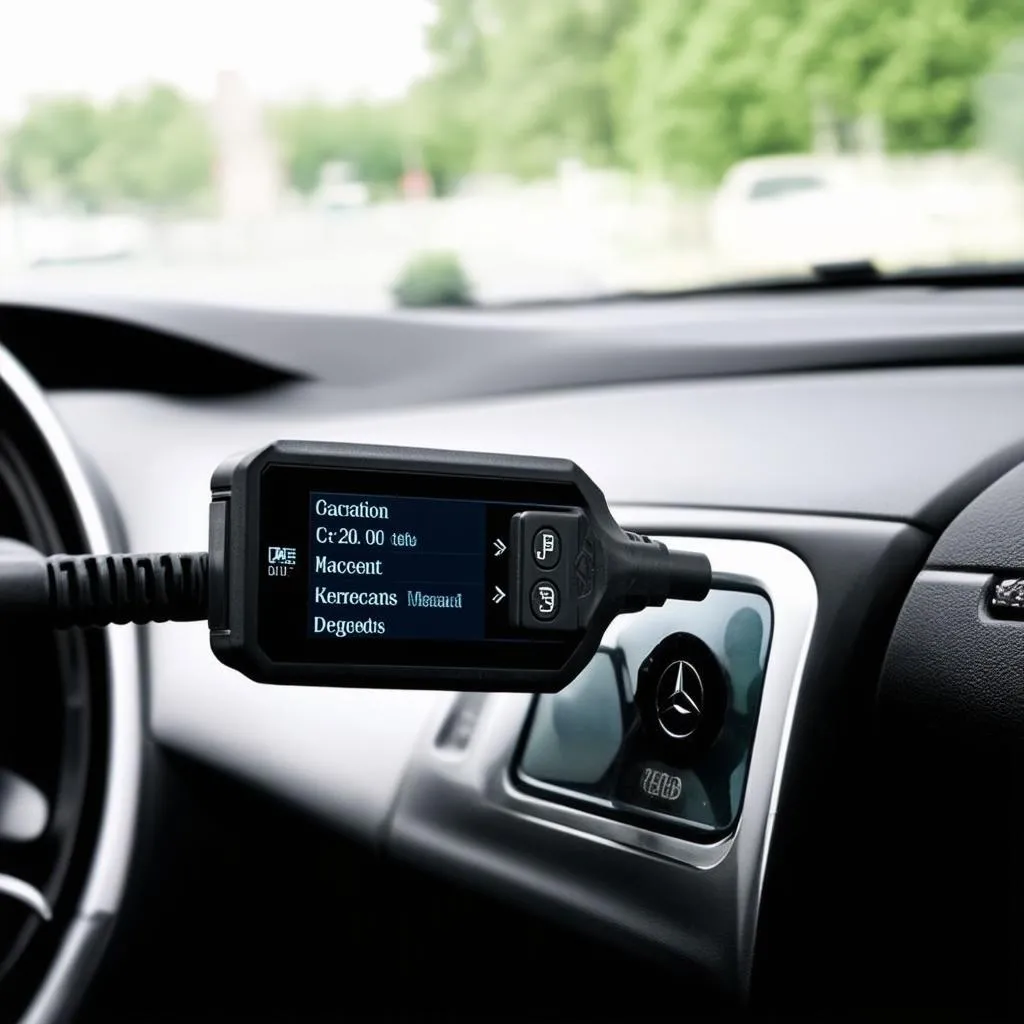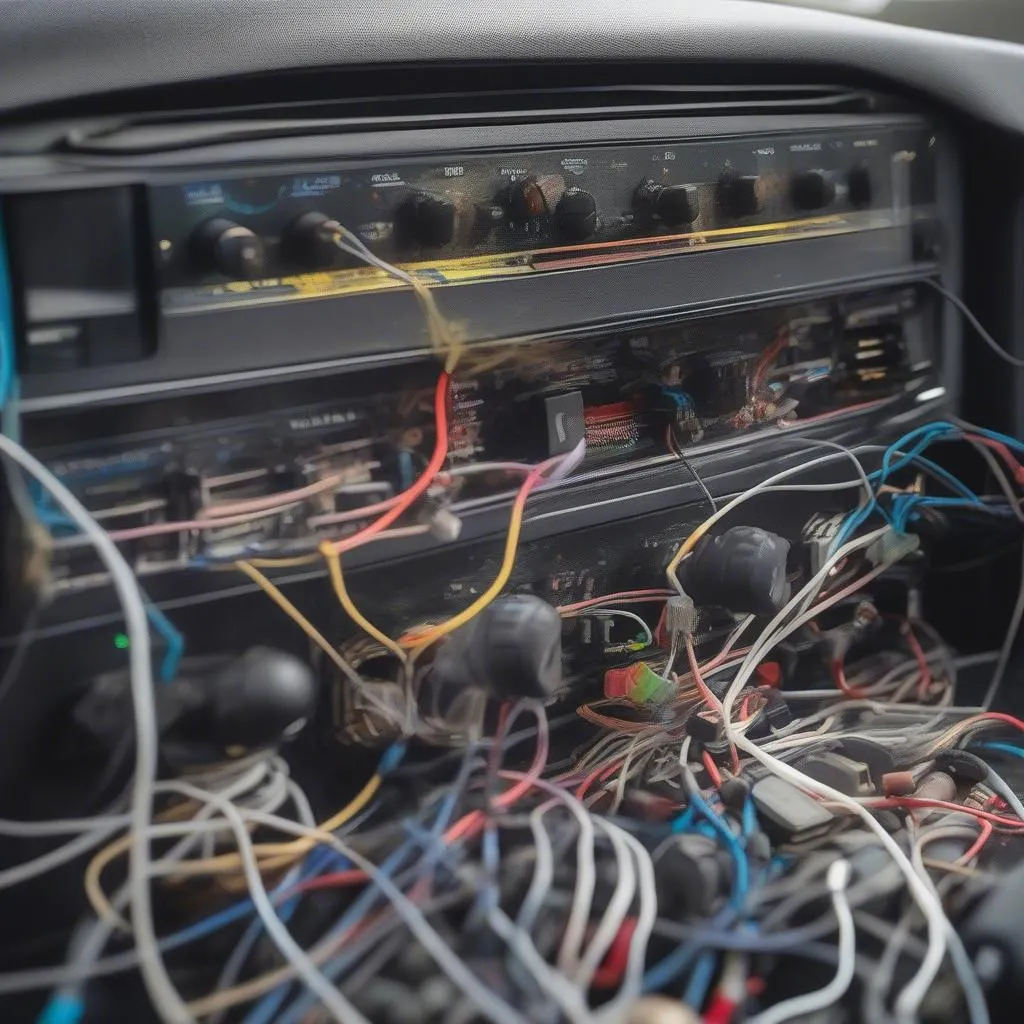The Mercedes-Benz LP-331 error code can be a real headache for owners. This code indicates an issue with the vehicle’s emissions system, and it often requires a “dealer fix.” But what does that actually mean, and is it possible to address the problem yourself? This article dives into the LP-331 error code, explaining what causes it, how to diagnose it, and what your options are for getting it fixed.
Understanding the Mercedes-Benz LP-331 Error Code
The LP-331 code signals a problem with the Diesel Particulate Filter (DPF) differential pressure sensor. This sensor plays a crucial role in monitoring the DPF’s health and triggering the regeneration process that burns off collected soot. When the sensor malfunctions or provides inaccurate readings, it can trigger the LP-331 code and put your Mercedes into limp mode to prevent potential engine damage.
Recognizing the Symptoms
Before you even connect a diagnostic tool, your Mercedes might show some telltale signs of a DPF issue, potentially leading to the dreaded LP-331 code:
- Dashboard Warning Lights: The “Check Engine” light is the most common indicator. You might also see a DPF-specific warning light.
- Reduced Engine Performance: This often manifests as a noticeable decrease in power, especially at higher RPMs. This “limp mode” is a safety feature to prevent further damage.
- Increased Exhaust Smoke: While not always present, excessive black smoke from the exhaust can indicate a clogged DPF.
- Unusual Odors: A strong, acrid smell coming from the exhaust could also point to a DPF issue.
Diagnosis: Tools for the Job
Proper diagnosis is key to efficiently resolving the LP-331 error. Here’s what you’ll need:
- OBD-II Scanner: A high-quality OBD-II scanner, preferably one capable of reading manufacturer-specific codes, is essential for retrieving and interpreting the LP-331 code and any accompanying error codes.
- Digital Multimeter: This tool will help you check the DPF pressure sensor for correct voltage readings and ensure it’s functioning within the manufacturer’s specifications.
- Visual Inspection: Don’t underestimate the power of a good visual inspection! Look for any loose connections, damaged wiring, or physical damage to the DPF system components.
 Mercedes DPF Sensor Location
Mercedes DPF Sensor Location
Addressing the LP-331 Error: Dealer Fix vs. DIY
1. Dealer Fix:
Dealerships have specialized diagnostic equipment and factory-trained technicians who understand the intricacies of Mercedes-Benz systems. They can:
- Accurately Diagnose: Pinpoint the root cause of the LP-331 code, whether it’s a faulty sensor, clogged DPF, or another issue.
- Perform Software Updates: Mercedes may release software updates that address known issues with the DPF system. Dealers have access to these updates.
- Replace Faulty Parts: Dealers can source and install genuine Mercedes-Benz parts, ensuring compatibility and optimal performance.
- Forced DPF Regeneration: If the DPF is clogged, dealers can perform a forced regeneration using specialized equipment.
2. DIY Options:
For experienced DIYers, certain aspects of the LP-331 fix might be tackled at home:
- Sensor Replacement: If you’ve confirmed the DPF pressure sensor is faulty, replacing it yourself is possible with basic mechanical skills and the right tools.
- DPF Cleaning: Various DPF cleaning solutions are available on the market that can help remove soot buildup. However, results can vary, and it’s crucial to choose a reputable brand and follow instructions carefully.
 Mechanic Replacing DPF Sensor
Mechanic Replacing DPF Sensor
Important: While DIY repairs can be tempting, remember that the Mercedes-Benz DPF system is complex. Incorrect repairs or modifications can lead to further damage and even void your warranty.
FAQs About the Mercedes-Benz LP-331 Error
Q: Can I keep driving with the LP-331 code?
A: It’s not advisable. Continuing to drive with a potential DPF issue can lead to serious engine damage.
Q: How much does a dealer fix for the LP-331 code cost?
A: The cost can vary greatly depending on the underlying cause and the required repairs. Sensor replacement might cost a few hundred dollars, while DPF replacement can be significantly more expensive.
Q: Can using the wrong diesel fuel trigger this code?
A: Using fuel that doesn’t meet Mercedes-Benz specifications can contribute to DPF clogging and potentially trigger the LP-331 code. Always use the recommended fuel type and grade.
Q: Are there any reliable OBD-II scanners for diagnosing Mercedes-Benz codes?
A: Yes, [CARDIAGTECH] offers a range of high-quality diagnostic tools that are compatible with Mercedes-Benz vehicles and capable of reading and clearing manufacturer-specific codes.
In Conclusion
The Mercedes-Benz LP-331 error code, while concerning, is not insurmountable. Understanding its causes and taking the right steps for diagnosis and repair can get you back on the road safely. While DIY options exist, carefully assess your skills and the potential risks before attempting any repairs yourself. When in doubt, consulting a qualified Mercedes-Benz technician or a reputable dealer is always the recommended course of action.


